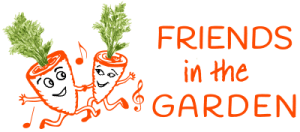The thrill of watching a hummingbird doesn’t get old. We’ve had hummingbird feeders for years and still, every time we catch one at the feeder or see one feeding from a flower, it’s an Event!
Everything about them seems magical – the way they fly, zipping here then there; the gorgeous shimmering colours; the tiny little bodies that rarely stay still.
They migrate yearly so there’s always an opportunity to invite them into your garden or yard. You can bring them to your space by putting out feeders, planting their favorite nectar-filled flowers, or doing both.
With very little effort you can host these magical pollinators and fill your day with surprise and delight. Read on to find out what to plant, how and what to feed them and how to get your kids involved. First, get to know a little more about these tiny flying wonders.
Hummingbird Fun Facts
Hummingbirds are fascinating little creatures. They are the smallest of all bird species. The tiny 2-inch Bee Hummingbird, native to Cuba, is the smallest bird on record. There are hundreds of hummingbird species and more still being identified, but there’s only about 15 species in the U.S.
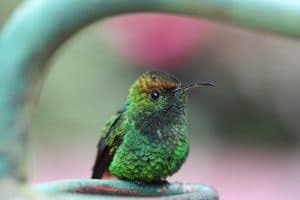 They like to eat spiders. Take that as a hint to not clear out spider webs where you’d like to attract hummers.
They like to eat spiders. Take that as a hint to not clear out spider webs where you’d like to attract hummers.
They can eat half their weight in the course of a day, which, as you might imagine, must take a lot of spider eating and nectar sipping. In fact, ruby-throated hummers can visit over 1,000 flowers in a single day. No wonder they don’t stay still for long.
Hummingbirds have an upgraded memory that allows them to recall exact flowers and feeder locations they visited the previous years. Impressive! I don’t remember what I had for lunch last week.
If you’ve observed hummingbirds up close, you know they don’t walk, they kind of jump or scoot sideways. They’re part of a “footless” order of birds called Apodiformes whose feet are adapted for flying, not walking.
Those wings, though! How fast are those wings? They flap 60-80 times per second. Close the door and try that with your arms. I did. I got like 6 flaps?
How to make hummingbird food
The Recipe: 4 Cups Water and 1 Cup White Sugar
Use ONLY white sugar. DO NOT ADD RED DYE.
Boil 2 cups of water and add the sugar. Stir to mix and make sure the sugar is completely dissolved. Remove the pot from the heat and stir in 2 cups of cool water. The whole mix should be near room temperature and ready to fill a feeder. Be careful not to add hot nectar to a feeder.
Pour the remaining nectar into a clean glass jar and store in the refrigerator for a up to two weeks.
Pro tips on hummingbird feeding and feeders
Change out the nectar twice a week in the summer. If temps are 90 degrees and up, you may need to change it more frequently, even every other day. What happens if you don’t? The nectar can ferment and cause a nasty fungus to grow on the hummer’s tongue. If that happens, they won’t be able to eat and they’ll starve to death. Please change the nectar regularly.
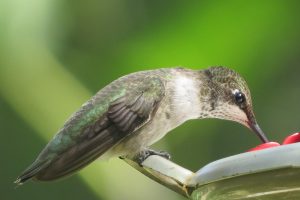 Keep the feeder clean by rinsing with white vinegar and water every time you change out the nectar. No Soap! Do not use soap! Soap can leave a film that is harmful to the hummers. I have a bottle washing scrubber thingy that I use to clean my feeders. Some white vinegar, some water and a few swishes does the job.
Keep the feeder clean by rinsing with white vinegar and water every time you change out the nectar. No Soap! Do not use soap! Soap can leave a film that is harmful to the hummers. I have a bottle washing scrubber thingy that I use to clean my feeders. Some white vinegar, some water and a few swishes does the job.
Place feeders in the shade so the sugar water doesn’t ferment. Having feeders in the shade also means bees and wasps are less likely to use the feeders, since they prefer feeding in direct sunlight.
If you have more than one feeder, place them far apart. Male hummingbirds are territorial when it comes to food, so have as much space between feeders as possible.
Plants to grow for attracting hummingbirds
Feeders are helpful in providing food when the natural supply is low, but nectar-filled flowers are a hummingbird’s first food go-to. So, help a hummer out by planting its favorite flowers.
If you know a few things about hummingbird habits, you can be strategic when creating special pla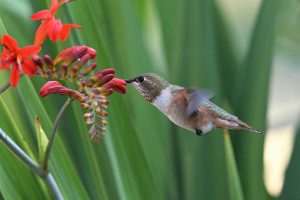 ces for them in your garden. Consider these things – hummers like bright, especially red, flowers; tube-shaped flowers (they hold more nectar); and the flowers need to be easy for the hummers to sip from.
ces for them in your garden. Consider these things – hummers like bright, especially red, flowers; tube-shaped flowers (they hold more nectar); and the flowers need to be easy for the hummers to sip from.
They like a variety of flowers so go splurge at the garden center and create a magical hummer wonderland!
Hummingbird’s favorite perennials:
- Trumpet Creeper (also called Hummingbird Vine)
- Butterfly Bush
- Bee Balm (also known as Bergamot or Monarda)
- Cardinal Flower
- Columbine
- Hibiscus
- Salvia
- Phlox
- Hyssop (also known as Hummingbird Mint or Agastache)
- Lobelia
- Clematis
Hummingbird’s favorite annuals:
- Salvia (the annual version called “firecracker plant”)
- Mexican sunflower
- Zinnia
- Impatiens
- Nasturtiums
- Mandevilla
- Petunias
- Nicotiana (flowering tobacco)
- Lantana
Give kids the hummingbird experience
Handfeed hummingbirds. You can handfeed hummingbirds. Did you know that? It’s thrilling. And it’s something you can do with kids if you have patient, quiet kids.
It takes some patience because you have to get the hummingbirds used to your presence before they’ll eat from your handheld feeder. The way to do it is to sit quietly under or near your regular feeder and let them eat. Just sit there and relax. Then rest your arm near the hanging feeder, holding the handheld feeder in your hand. Make sure you have a way to relax your arm and 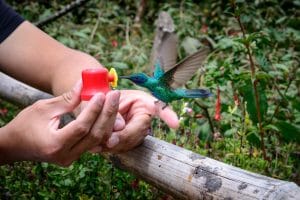 hand there because it might take some time before the hummer comes near. But it will. And when it does, it may eat out of the handheld feeder. If it doesn’t, try removing the hanging feeder and see if the hummers will now eat out of your hand.
hand there because it might take some time before the hummer comes near. But it will. And when it does, it may eat out of the handheld feeder. If it doesn’t, try removing the hanging feeder and see if the hummers will now eat out of your hand.
You can find handheld feeders online and at specialty stores. Etsy has some good ones, small and brightly coloured. I’m not affiliated and will not financially benefit from making this recommendation.
Get your kids to help with creating your magical hummingbird spaces. They can help you choose flowers from the above lists, help you decide where to plant them, and help you plant them. And of course, they can help the new plants get established by watering them.
What special memories that will make for you and the kid(s)! And every year you get to watch the perennials grow and bring the hummingbirds back to your yard.
I hope this has inspired you to start inviting hummingbirds to your yard and garden. It’s pretty easy and now you have the info you need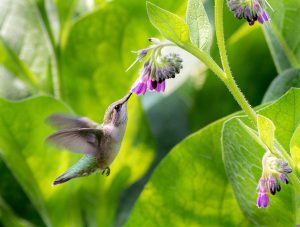 to do it. They can use our help since, as with all pollinators, food sources aren’t as abundant as they used to be or need to be. So, if you haven’t already – grow some flowers and put out some feeders. They’ll come. They will. And they’ll bring magic and beauty to your day.
to do it. They can use our help since, as with all pollinators, food sources aren’t as abundant as they used to be or need to be. So, if you haven’t already – grow some flowers and put out some feeders. They’ll come. They will. And they’ll bring magic and beauty to your day.
Thanks so much for reading! Please sign up for the Friends in the Garden newsletter (scroll to bottom of the page). It hits your mailbox every Tuesday with a revolving variety of kid-friendly garden-related music videos, colouring pages, how-to videos and informative blog posts. Subscribe to our Youtube channel (it really helps our videos get suggested and viewed). And most of all, take care of yourself by getting outside and playing in some dirt, Yeah!
Peace, Love & Hummingbirds
XOXO
